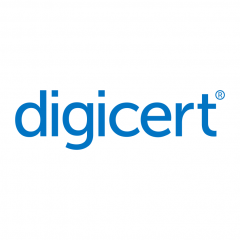By Mark Packham
Since the pandemic, more emphasis has been poured into online communications. On average, an individual receives 121 emails per day. While 55% of brands were found to be emailing customers more since the start of the pandemic, breaking through the clutter of the inbox is becoming increasingly difficult, yet ever more important. Asia in particular sees the lowest email open rate of 18.51% in 2020.
However, marketers now have the option to differentiate their brands with the newly introduced Verified Mark Certificates (VMCs), a form of digital certificates that allows them to use their trademarked logo as a visual branding element within the email inbox — even before customers click into the email. Early indications from marketers using VMCs are finding increased brand recognition and improved open rates.
Furthermore, VMCs ensure that a company uses Domain-based Message Authentication, Reporting & Conformance (DMARC), an email authentication, policy, and reporting protocol, bringing greater trust to the inbox and helping to protect against unauthorised uses of the company’s domains including phishing or spoofing.

Increasing brand recognition in email marketing
VMCs can increase brand impressions, engagement rates and ROI for email marketing. Having a verified logo in customers’ inboxes can help brand messages to stand out in all the clutter. The verified logo is a visual trust indicator that can lead to higher open rates and deliver a more positive customer experience.
As most enterprises have already invested a lot into branding and logo, VMCs allow for a new channel for that to pay off. VMCs require minimal spend for a strong payoff. Marketers can also pair VMCs with common subdomains to further take advantage of their logo in emails. In sum, VMCs support greater trust and transparency in the inbox, making it easier for companies to connect with their audience through email marketing.
According to Ikko Furuki, CEO of Cybervision Hosting, VMCs improve email security and increase open rates with the display of validated brand logos and DMARC enforcement. Users can have confidence in knowing which company is sending them the email, which he feels will help protect customers and increase their loyalty. With global support for this digital certificate, the company will soon be able to offer VMC in the regions it operates in.
Improving email security with VMCs
A VMC is a digital certificate that verifies logo ownership and allows a company to display its logo in email inboxes. Currently offered by a few certificate authorities, VMCs are a part of the Brand Indicator Message Identification (BIMI) initiative, which is an industry-wide effort to combat email security issues and help protect against phishing and spoofing.
This is similar to having a verified checkmark on Twitter, assuring the receiver that emails have been verified. However, VMCs go beyond email engagement by increasing security through the BIMI standard.
To be eligible for a VMC, organisations must have DMARC enforcement. Under DMARC, inboxes verify that the email comes from the specified domain. DMARC also gives companies visibility into the messages being sent from their domains. Thus, becoming eligible for a VMC will also increase email security, ensuring that IT teams are on board in this process as well.
CEO of eHarmony, Gareth Mandel, believes that BIMI authenticates emails using DMARC, key protection against email phishing, spoofing and other attacks. To install VMCs and display its verified logo, the company worked closely with its IT department to ensure that DMARC was enforced. The internal partnership on this project has even further strengthened the connection between its CRM and IT teams.
Once a company is DMARC compliant and has received a VMC from a certificate authority, its trademarked logo is displayed as a visual trust indicator in the inbox.
Incorporating VMCs within the company
Qualifying a company for a VMC is not a trivial effort, as it requires close coordination between marketing and IT teams. Since the initiative will be a collaborative one, it will be critical to obtaining buy-in from leaders and key business stakeholders across the company. When building momentum and mindshare for the initiative, it is important to point out that VMCs not only have promising potential for marketing but can also help companies minimise their own risk.
Companies can get ready for a VMC by ensuring that they are compliant with DMARC and preparing their logos for BIMI. Additionally, they can check if their brand logos are registered trademarks and apply for a registered trademark if they are not. Organisations may also need multiple VMCs if they have multiple logos.
Maximising the value of VMCs
To maximise the value of a VMC, marketers should be testing engagement rates including open rates and click-through rates.
Since VMCs are a new type of technology, customers might not be familiar with them yet. Companies can thus inform customers that the logo in their inbox is an indicator of trust so that they know the email is from the company’s secure domain. Companies can also let them know that they are protecting them against phishing and spoofing because DMARC is enforced. This sends a powerful message about companies’ commitment to their brand and reputation.
Some certificate authorities, such as DigiCert, offer a VMC toolkit for sample email templates, graphics and web copy to help communicate the value of VMCs to internal and external audiences.
The hybrid work trend is here to stay, and many customers will continue to work from home and receive news and product information from the comfort of their homes. With cyber threats looming, authenticated email marketing can no longer be an afterthought, and the ability to visually assure customers of the safety of marketing emails is a breakthrough for the industry. Increasing threats from phishing emails and other scams are also putting pressure on marketers to ensure that they use the relevant tools to protect customers and earn their trust. Embracing innovation such as VMCs will help marketers to tackle an increasingly challenging marketing landscape and gain more loyal customers.
Mark Packham is the Executive Vice President of Marketing at DigiCert
















